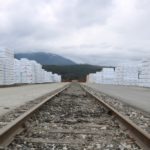SLA 2017
Posted: May 22, 2017Source: The Forest Blog
By Russ Vaagen

Complicated Issue
This issue it complicated because there are so many different details. Since we have two countries supplying the same market it is important the playing field is level.
Without an agreement, both sides take turns bringing up issues that result in imposed duties (a direct tax) on lumber volume shipped into the US. Quotas can also be imposed that limits the amount of lumber allowed into the US. These can be very painful tools that can cost companies money or from the other perspective, effective restraints to protect market viability.
Since the expiration of the most recent SLA in 2015, Canadian companies shipped lumber into the US without a duty and with no quotas. On April 24 2017, the US government imposed a 20% duty on all lumber being imported from Canada. It appears that it was done to not only help US producers remain competitive due to the strengthening dollar but also force negotiations on a new SLA.
Lumber prices have responded, but not like most predicted. Right now the lumber market reported by Random Lengths is $414 per thousand board feet. The price for structural lumber has dropped from $437, down $23 . That’s a drop of over 5%. A far cry from the 20% increase most analysts were writing about.
Differences Require Adjustments
Since the US and Canada have separate economies and currencies these issues can vary year to year, market to market. These fluctuations effect all types of products and industries. Canada is much more dependent on Agriculture and Natural Resources than the United States. This causes changes in currencies and product prices that have both a negative and positive effect on businesses.
These adjustments should be spelled out in an updated SLA. If the prior agreement had just been updated, there would be no duty today. Many Canadian producers are upset because they wouldn’t be paying anything under the 2006 SLA. In this video, I talk a little about that.
Softwood Lumber Agreement Solutions
This solution isn’t that difficult, but it will take time and effort from both sides. Housing is a real issue in major markets of both countries. Lumber is the only major building component that captures carbon and stores it. We need to be using more lumber. It makes sense for us to have a system that provides a level marketplace for both Canadian and US producers so we can maintain and grow the production of sustainable lumber. We need to continue to pursue more and better markets for lumber, especially in the urban space where density is ever more important.
It is important to have duty rates that are fair for both producers and do not increase the cost of lumber for consumers. These triggers and rates also need to bring producers together, not create animosity. Once we have a new Softwood Lumber Agreement we can work on developing more and better products like Mass Timber, while increasing ways to develop more sustainable raw materials for the growth of the entire industry.
